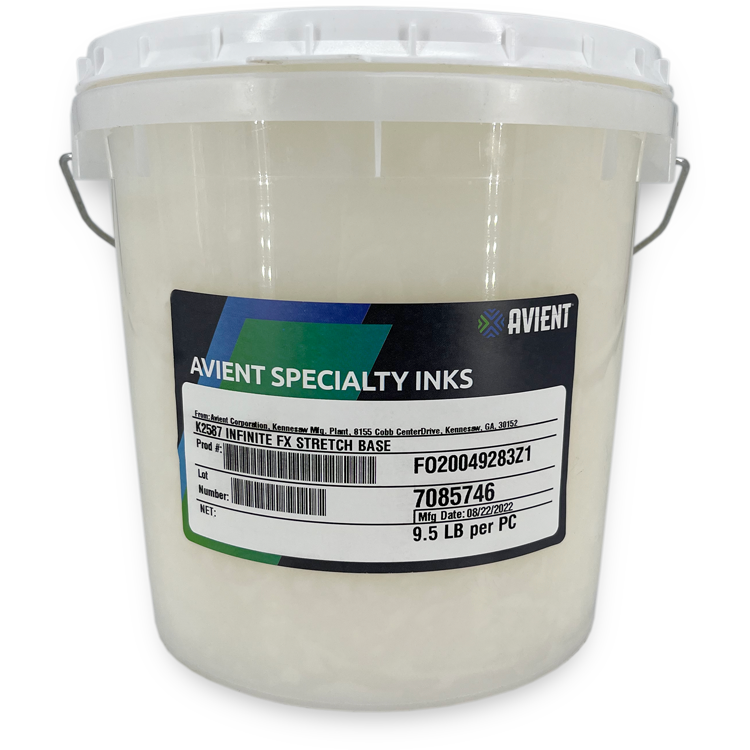
Additional Information
- Superior adhesion to fabrics, stretch properties, and wash durability
- Ideal for heat sensitive or stretch fabrics
Fabric Types
- Cotton, Lycra/Spandex
Mesh
- Counts: 86-230 t/in (34-90 t/cm)
- Tension: 25-35 n/cm
Squeegee
- Durometer: 60-70, 60/90/60
- Edge: Square, Sharp
- Stroke: Hard flood, Medium stroke
- *Do not use excess squeegee pressure
Non-Phthalate Stencil
- Direct: 2 over 2
- Off Contact: 1/16” (.2cm)
- Emulsion Over Mesh: 15-20%
Flash & Cure Temperatures
- Flash: 160°F (70°C)
- Cure: 320°F (160°C)
Pigment Loading
- N/A
Epic Additives
- N/A
- *All percentages listed at % by weight
Shipping & Storage
- 65-90°F (18-32°C)
- Avoid direct sunlight.
- Use within one year of receipt
Clean Up
- Ink degradent or press wash
- Avoid using water-resistant emulsions as they can react with the components used to manufacture Infinite FX Stretch Base and cause the ink to lockup and clog the mesh openings. Any other solvent resistant direct emulsions or capillary films will be acceptable
- Up to 35% Infinite FX Stretch Base may be added to plastisols to achieve desired elongation in print
- Use as a stand-alone product for a first-down base layer to improve overall stretch of subsequent ink layers
- Do not mix into inks formulated for polyester or print this product onto any dyed fabric containing Cure: 320°F (160°C) polyester as it will promote dye migration N/A
- Curing is a time and temperature process, a lower oven temperature setting with a slower belt speed while maintaining recommended ink cure temperature is always best to protect fabric, control dye migration and reduce energy consumption
- Stir plastisols before printing.
- Do not dry clean, bleach or iron printed area.
- Perform fusion tests before production. Failure to cure ink properly can result in poor wash fastness, inferior adhesion and unacceptable durability. Gel and cure temperatures for ink should be measured using a Thermoprobe device placed directly in the wet ink film and verified on the substrate(s) and equipment to be used for production.
- It is the responsibility of the printer to determine that the correct ink has been selected for a specific substrate and the application processes meet the printer’s customer standards or specifications.
- Curing is the responsibility of each printer to confirm that the print is fully cured. PolyOne’s cure recommendations are not a guarantee or warranty, but merely suggested starting points for curing evaluations as explained above.
- When printing on garments that contain certain dyes, you must pre-test for the potential ghosting. Please refer to our website for more information on this issue.
- Wilflex products have been carefully designed to perform within a given viscosity range, and any dramatic change in viscosity is probable to result in a change in printing characteristics
- NON-CONTAMINATION OF EPIC INKS: Do not mix EPIC inks with inks, additives or extenders from other companies. All buckets, palette knives, stirring apparatus, squeegees, flood bars and screens must be cleaned properly and free of phthalates and pvc containing inks. Non-phthalate emulsions and pallet adhesives must be used. Failure to follow these precautions may cause phthalate contamination in violation of consumer protection laws and regulations.
- Any application not referred in this product information bulletin should be pre-tested or consultation sought with Wilflex Technical Services Department prior to printing.

